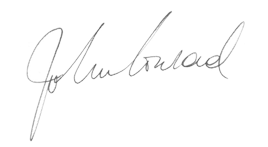Cultural Analysis, Volume 1, 2000
Welcome to CULTURAL ANALYSIS!
Welcome to the first volume of Cultural Analysis: An Interdisciplinary Forum on Folklore and Popular Culture. Between and beyond disciplines, Cultural Analysis is global in scope and dialogic in form; it's distributed through the Internet, free of charge, with articles and reviews published on an on-going basis rather than periodically.
Cultural Analysis is a forum for the international scholarly community to exchange ideas and develop new lines of thinking about cultural forms, and to work with the ways in which these forms inform our daily lives while serving as resources for individual, group, and institutional expression. Cultural Analysis is dedicated to new ways of discussing, theorizing, and analyzing these cultural forms, their meanings, uses, and their relations to larger social structures. As we see it, the journal is post-disciplinary; challenging hardened boundaries and exploring neglected gaps and interstices between and within disciplines.
While Cultural Analysis is distributed on the Internet, the journal adheres to strict standards of scholarship and is fully peer-reviewed. The board of editors is a select international group of scholars representing a wide array of approaches and specializations. Uniting them, however, is a common concern with expressive and everyday culture, and the imperative to engage it analytically, by any means necessary?—through theory, fieldwork, and/or text-criticism. We also share the conviction that dialogue across disciplines is essential to our intellectual enterprise.
Current conditions of knowledge call for new forms of scholarly communication, and Cultural Analysis is structured to induce discussion and fertilization across the disciplines. In addition to articles and reviews, each article is followed by two responses by scholars from outside the immediate field of the author, who nonetheless cover similar topics in their research. These responses suggest alternative analyses or expand on ideas put forth in the articles. Furthermore, after this inaugural volume, the posting of articles and reviews will be on-going, eliminating the time lag between periodic publications. In other words, one can access the scholarship and the critical response as they appear. However, we will close each volume at year's end so it can be printed and bound as a whole, in fixed-page format allowing for full citation. Thus Cultural Analysis offers the best of both worlds, the new and the conventional.
Response to Cultural Analysis has been extensive and enthusiastic, and we would like to thank in particular our colleagues from across the world who have joined our editorial board. Thanks also to the generous support of the Doreen B. Townsend Center for the Humanities and the Graduate Assembly at the University of California at Berkeley, whose contributions to Cultural Analysis have allowed us to bring an idea to material reality.
This first volume embodies the intent of the journal's charter. The contributors represent a wide international and disciplinary range, while the individual articles are quite interdisciplinary in content. Some, such as Francisco Vaz da Silva, revisit established canon, interrogating, challenging, and exploring new interpretations and readings. Others, such as David Hyndman, expand on previous analytical works, extending their application, whereas the article by Regina Bendix opens up brand-new theoretical terrain.
Vaz da Silva's trenchant reexamination of Bengt Holbek's Interpretation of Fairy Tales, questioning many of his by-now standard interpretations and exposing these to new analysis, provides new avenues for interrogating familiar territory, and shows us, again, that analyses as well as data are situated. The articles by David Hyndman and Ray Cashman work nicely as discrete analyses of the politics of culture and the overlay of global consumer culture on the local. In "Dominant Discourses of Power Relations and the Melanesian Other," Hyndman applies the insights of Lutz and Collins' 1993 Reading National Geographic to the specific context of Melanesia. In closely scrutinizing representations of Melanesians in National Geographic over a 15-year period, he illustrates how these mediated views of postcolonial landscapes and subjects are anything but "natural," and how they serve to reinscribe existing (imperial) power relations through a series of subtle and not-so-subtle techniques. Ray Cashman's "'Young Ned of the Hill' and the Reemergence of the Irish Rapparee" traces the "resurrection" of the legendary Irish hero in a song by the 1980s Irish rock band, the Pogues. Cashman argues that this internationally distributed song had particular resonance at home, in the context of the contemporary political and military situation in Northern Ireland. But Cashman's analysis reminds us again of the new conditions that mitigate our analyses of such adaptations of traditional genres or themes?—local resistance and empowerment is made possible, in part, by a global consumerist enterprise.
Regina Bendix's "The Pleasures of the Ear" expands the emphasis on the aural over the visual by arguing for an "Ethnography of Listening," an enterprise that clearly challenges not only disciplinary practice but suggests an alternate ecology of the mind, which, if explored, might provide a richer understanding of cultural practices. Finally, Rob Baum's playful re-evaluation of the Cinderella tale offers a truly extra-disciplinary excursion into the many relays between folklore, popular culture, the "culture industry," and also social expectations of gender. Her feminist reading of the historical appropriations of Cinderella indicate to her a generalized "absenting" of women from society.
The range of scholarship, themes, disciplines, and styles represented in this first issue's collection of articles is very exciting. We hope that these articles are just the beginning, and that Cultural Analysis fulfills its goal, through the discussion that flows from these articles, of being "An Interdisciplinary Forum" dedicated to investigating expressive and everyday culture.
